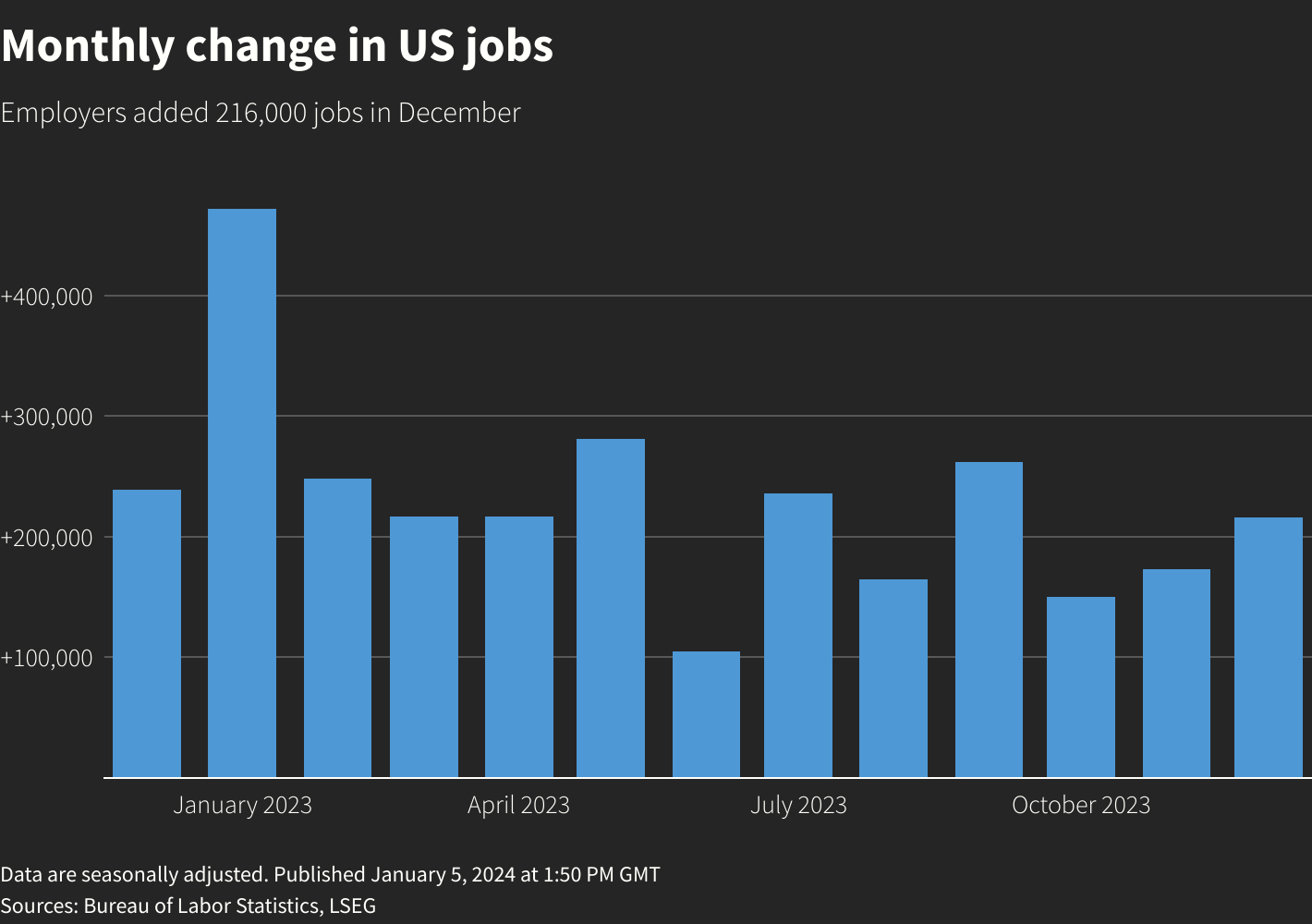The U.S. jobs market, in a robust display of economic vigor, added an impressive 216,000 jobs in December, significantly outstripping expectations. This surge in employment challenges the narrative of an imminent Federal Reserve rate cut and reinforces the strength of the U.S. economy amidst global uncertainties. The U.S. labor market, it seems, is not just walking; it’s running.
A Surprising Upsurge in Employment
December’s job creation, eclipsing November’s revised figure of 173,000, paints a picture of a resilient and dynamic U.S. economy. These numbers, courtesy of the Bureau of Labor Statistics, hold more than just data; they tell a story of an economy that’s beating the odds. The U.S. unemployment rate, holding steady at 3.7 percent, stands as a testament to this robust economic performance.
This jobs data is not merely a statistic; it’s a crucial barometer for the Federal Reserve as it navigates the complex waters of monetary policy in a high-rate environment. The market’s reaction to this data was akin to a rollercoaster ride – initial spikes in Treasury yields followed by a recalibration after the release of ISM data indicating a slowdown in the U.S. services sector.
The complexity of these job figures lies not just in their numbers but in their implications. For the Fed, it’s a conundrum – balancing the need for rate adjustments with the realities of a thriving job market. For the U.S. administration, it’s a victory lap, an opportunity to tout the strength of the American workforce.
Wage Growth and Economic Implications for the U.S.
The story, however, gets even more interesting when you consider wage growth. Over 2023, U.S. workers saw their hourly pay rise by 4.1 percent, outpacing headline inflation. In December alone, wages rose by 0.4 percent. This isn’t just about numbers going up; it’s about real people with more in their pockets in a time when every dollar counts.
Despite the rosy picture painted by the December figures, a closer look reveals a labor market that’s slowing down, moving from a sprint to a jog. As noted by Dante DeAntonio of Moody’s Analytics, the three-month average payroll gain has dipped, signaling a potential cooling off in the labor market’s growth trajectory.
The White House might be reveling in the rise in real wages, but the Federal Reserve is in a tight spot. Wage growth at this pace could complicate efforts to rein in inflation to the Fed’s target. The labor force participation rate’s slight dip to 62.5 percent in December adds another layer to this economic puzzle.
Policy makers are likely to keep a keen eye on wage growth figures, given their potential to fuel service-based inflation. This is a delicate balancing act – fostering job growth while keeping inflation in check.
In a broader context, the U.S. jobs market’s performance in December is a microcosm of the country’s economic resilience. Treasury Secretary Janet Yellen’s remarks about achieving a soft landing – where inflation is tamed without significant damage to the labor market – encapsulate this sentiment. The U.S. economy, navigating through rate hikes and inflationary pressures, has demonstrated a robustness that belies predictions of an impending recession.
All in all, the U.S. jobs market in December showcased its strength, defying expectations and shaping monetary policy discussions. With robust job creation and wage growth, the U.S. economy is sending a clear message: it’s not just surviving; it’s thriving. As we move into the new year, the jobs market’s performance will continue to be a key indicator of the U.S. economy’s health and a critical factor in shaping economic policy.





